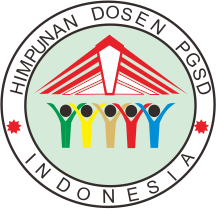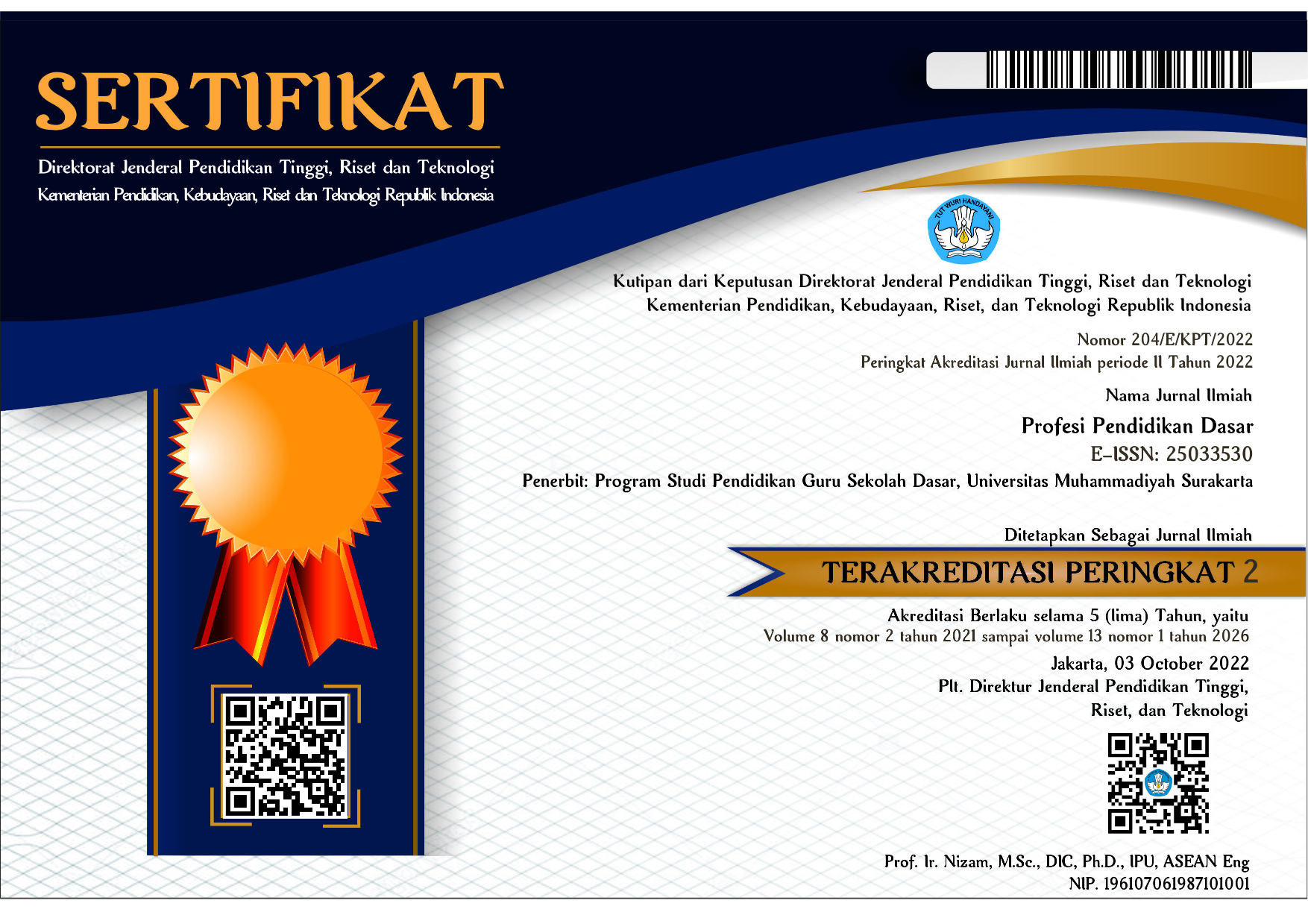KELEBIHAN DAN KELEMAHAN METODE TALAQQI DALAM PROGRAM TAHFIDZ AL-QUR’AN JUZ 29 DAN 30 PADA SISWA KELAS ATAS MADRASAH IBTIDAIYAH MUHAMMADIYAH
Ratnasari Diah Utami(1*), Yosina Maharani(2)(1) (ID Sinta:5988154) (ID SCOPUS:57200494835) Elementary School Teacher Education (PGSD), Faculty of Teacher Training and Education (FKIP), Universitas Muhammadiyah Surakarta
(2) PGSD UMS
(*) Corresponding Author
Abstract
Keywords
Full Text:
PDFReferences
Awaluddin, Iqbal. 2017. “Pelaksanaan Pembelajaran Tahsin dan Tahfidz dengan Metode Talaqqi di SMP Muhammadiyah Surakarta Tahun Pelajaran 2016/2017”. Skripsi. Fakultas Agama Islam, Universitas Muhammadiyah Surakarta”.
Fatimah, Meti. 2017. “Metode Hafalan Al-Qur’an Kelas V Sekolah Dasar Islam Terpadu Ibnu Umar dan Sekolah Dasar Muhammadiyah Program Khusus Boyolali ahun 2015/2016”. Skripsi. Fakultas Agama Islam, Universitas Muhammadiyah Surakarta.
Hashim, Azmil. 2015. “Corelation between Strategy of Tahfiz Learning Styles and Students Performance in Al-Qur’an Memorization (Hifz)”. Mediterranean Journal of Social. Malaysia: Fakulty of Human Science, Universiti Pendidikan Sultan Idris. Vol. 6, No 2 S5 hal 13-21
____________. 2016. “Role of Employers in Empowering Lecturers in Tahfiz Institutions of Malaysia”. Mediterranean Jornal of Social. Malaysia: Universiti Pendidikan Sultan Idris. Vol. 6 Issue 1 hal 85-92
Herry, Bahirul Amali. 2013. Agar Orang Sibuk Bisa Menghafal Al-Qur’an. Yogyakarta: Pro-U Media.
Makhyaruddin.2016. Rahasia Nikmatnya Menghafal Al-Qur’an. Jakarta: PT. Mizan Publika.
Musfiqon. 2015. Panduan Lengkap Metodologi Penelitian Pendidikan. Jakarta: PT. Prestasi Pustakaraya.
Qawi, Abdul. 2017. “Peningkatan Prestasi Belajar Hafalan Al-Qur’an melalui Metode Talaqqi di MTsN Gampong Teungoh Aceh Utara”. Jurnal Ilmiah Islam Futura. Aceh. Vol. 16 No. 2 hal 265-283.
Susianti, Cucu. 2016 “Efektivitas Metode Talaqqi dalam Meningkatkan Kemampuan Menghafal Al-Qur’an Anak Usia Dini”. Tunas Siliwangi. Universitas Pendidikan Nasional. Vol 2 No 1 hal 1-19”
Article Metrics
Abstract view(s): 6831 time(s)PDF: 3377 time(s)
Refbacks
- There are currently no refbacks.


















